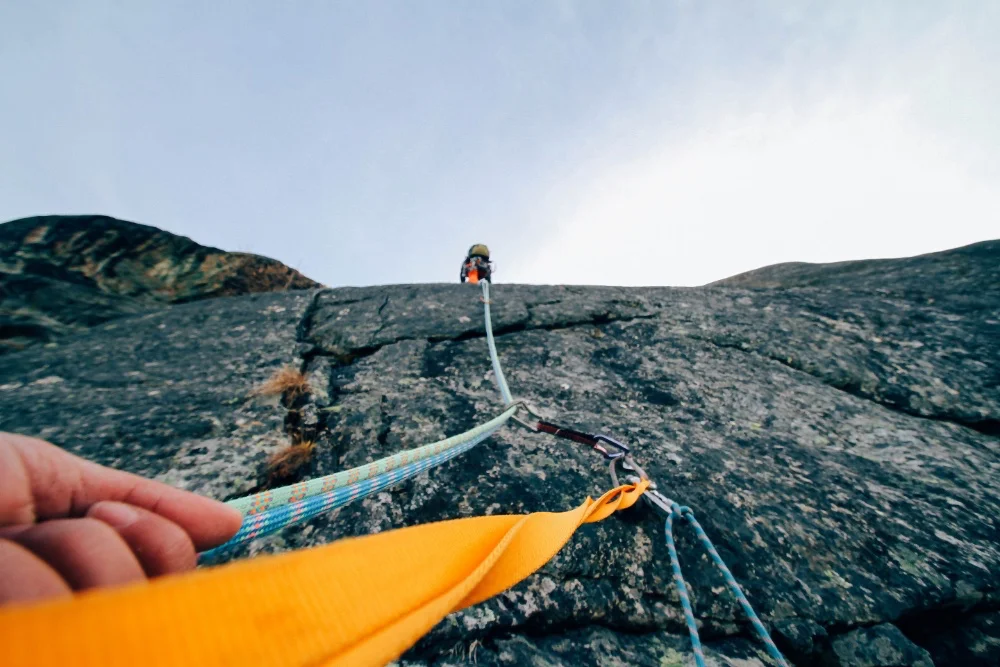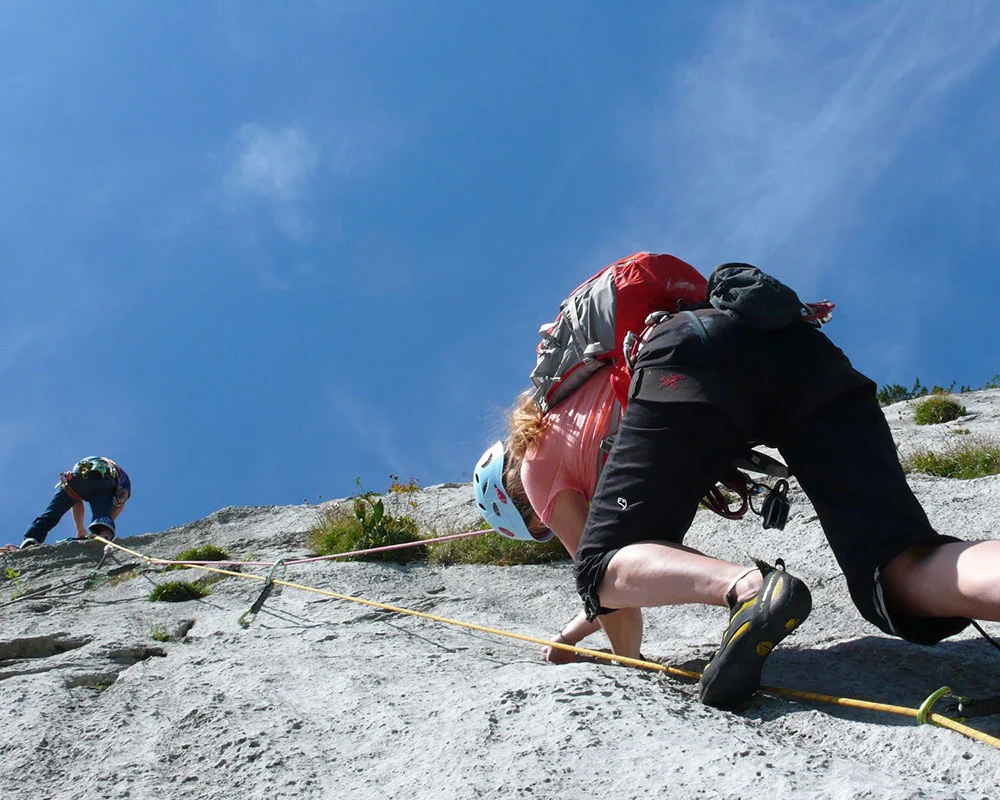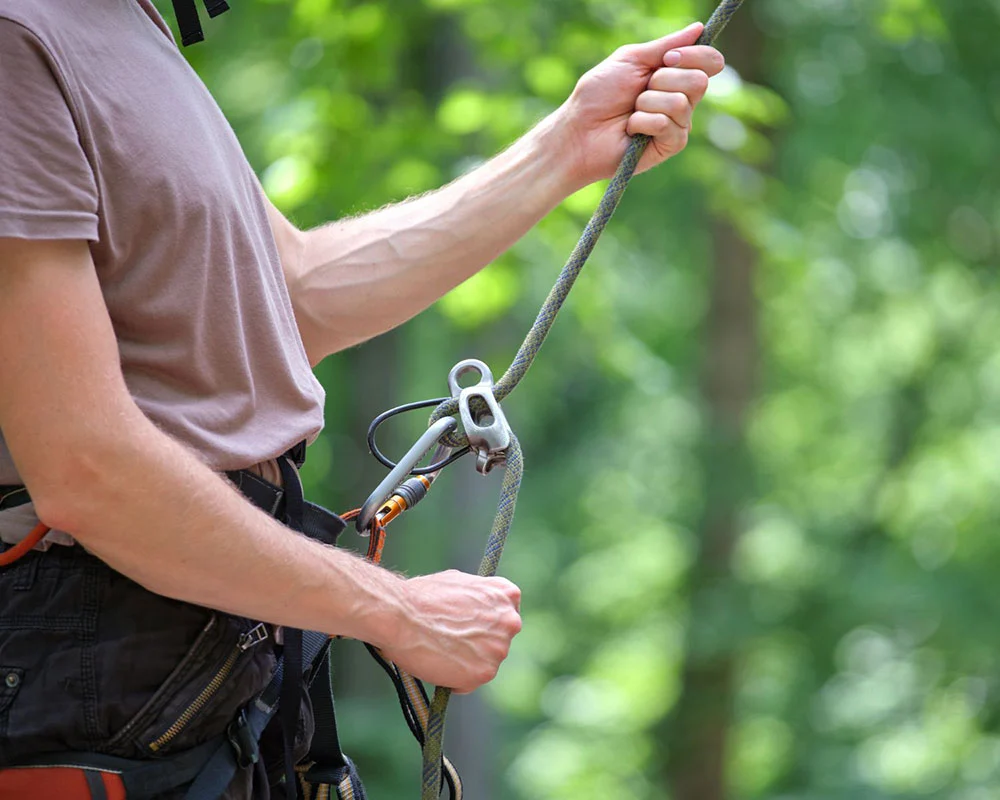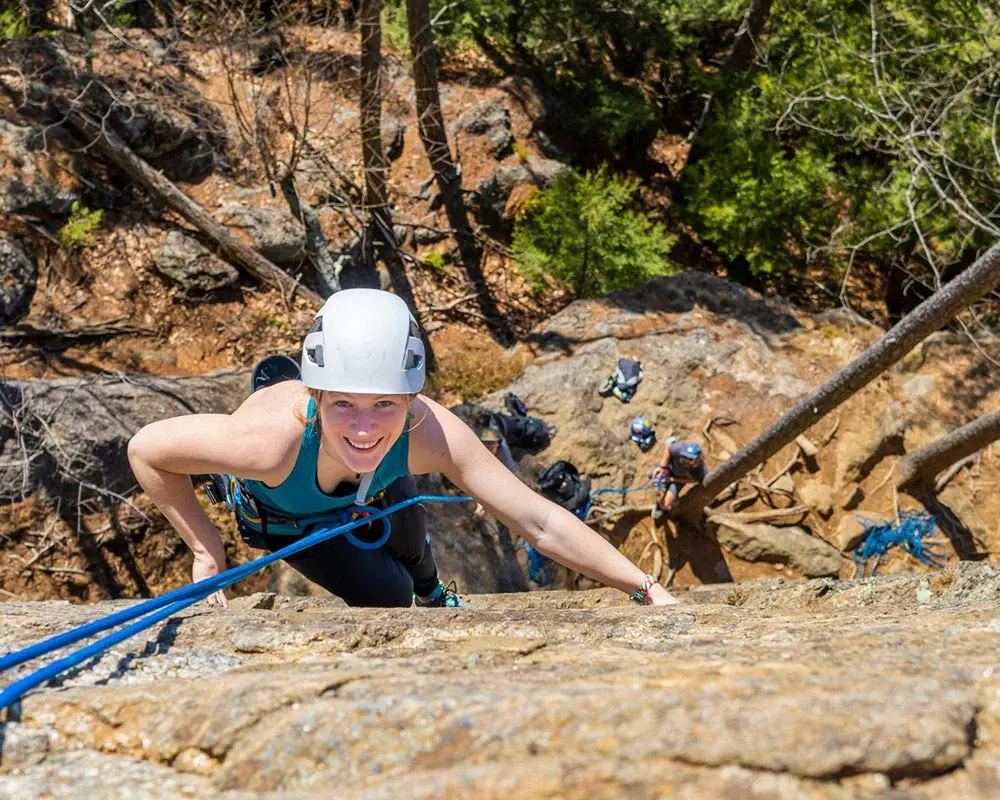In the thrilling yet complex world of rock climbing, understanding terms like “pitch” is crucial. This guide covers what a pitch is, its various lengths, and how to navigate it proficiently.
We’ll also touch upon advanced subjects like multi-pitch and big wall climbing while offering guidance on choosing the appropriate pitch for your skill level.
With practical advice and answers to common questions about pitches in rock climbing, this guide is designed to get you ready for your pitch climbing adventure. Get ready to ascend with confidence!
Key Takeaways
- A pitch in rock climbing refers to a section of a route or climb that requires one rope length (approximately 60 m) of climbing. It allows climbers to break up longer routes into manageable chunks for safer climbing and rest stops.
- Basic skills required for pitch climbing include proper foot placements, body positioning, balance, rope management, and communication with your partner.
- Pitches can vary greatly in length and difficulty depending on factors such as terrain type, angle of inclination, and the experience level of the climbers.
- Multi-pitch climbing involves ascending a cliff with multiple pitches, requiring additional gear and techniques compared to single-pitch climbs.
- Big wall climbing is a type of multi-pitch climbing that involves scaling large walls, usually over 500 feet tall, requiring advanced gear and techniques.
- Choosing the right pitch for your skill level is crucial for a successful climb. Consider factors such as weather conditions and time constraints when planning your route.
What is a pitch in rock climbing?
A ‘pitch’ in rock climbing refers to a section of a route or climb requiring one rope length (approximately 60 m).
Climbing a multi-pitch route is an exhilarating experience that every climber should undertake. It can be intimidating, but with the right knowledge, it’s a thrilling journey up the rock face.
Pitches allow climbers to break up longer routes into more manageable chunks; allowing them to be belayed safely and take rests between each part if need be. The number of pitches on a given route will vary depending on its difficulty level and other factors such as terrain or conditions.
In addition to making your climb safer, using pitches has many practical benefits. Climbing with multiple ropes means that gear can be shared between different parts of the route, making it easier for novice climbers who may not have their own equipment yet.
Additionally, knowing how many pitches there are before setting off allows you to plan rest stops along the way – helping you pace yourself and enjoy every single moment of the climb.
Basics of Using Pitches
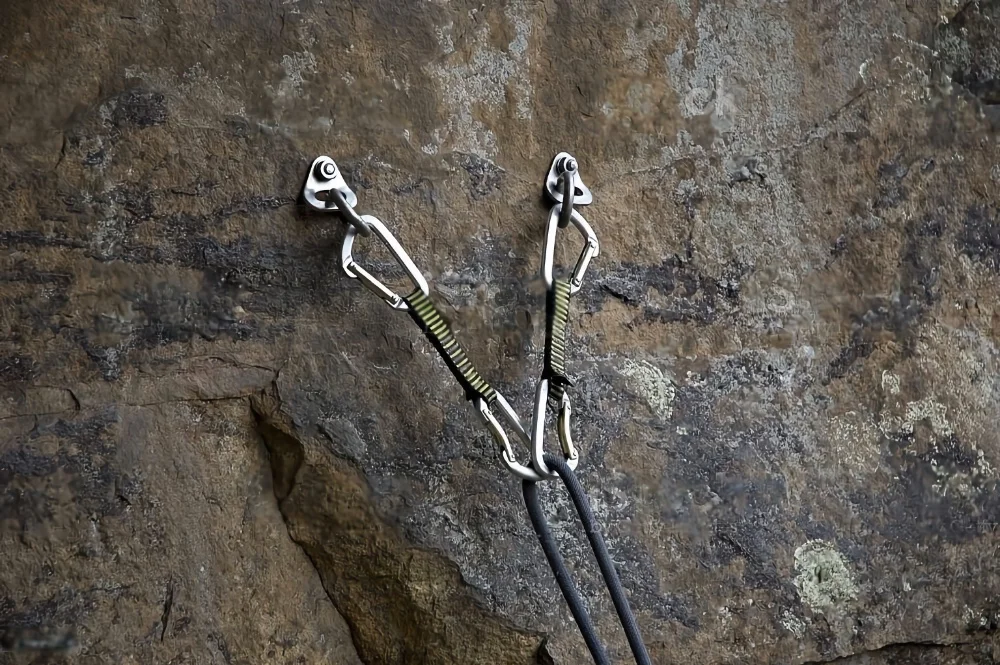
A pitch in rock climbing is a section of the climb that uses one full rope length.
It begins and ends at a belay station, which can be natural or man-made anchors. A single-pitch climb involves two people: the climber and the belayer.
The climber ascends first, clipping into protection points along the way to secure themselves against falls, while the belayer stands below with both ends of the rope and controls its tension from below. This ensures that if any slips occur during ascent, they are safely arrested by the belayer.
When it comes to multi-pitch climbs, however, this process is repeated several times until all climbers reach the summit. As each person takes turns leading up successive pitches, rope drag becomes an increasingly prominent factor as more sections of the rope must be pulled through multiple pieces of gear on their way up.
That’s why understanding how to manage rope movement is integral for efficient progress on long routes.
Climbing pitches also vary in difficulty based on various factors such as terrain type and angle of inclination. Knowing how to identify these features helps you make informed decisions about when and how far up you should go before setting up your next anchor point for a safe descent.
Here are a few videos on how to effectively set up a pitch:
Length Of Pitches
In rock climbing, pitches are like chapters in a book. Each pitch has unique characteristics and challenges, making the climb an interesting journey. Understanding the concept of pitches is key for novice climbers, especially when planning multi-pitch routes.
Pitches can come in many shapes and sizes – whether they’re short or long, steep or slabby. Also, the length of each pitch can vary greatly depending on several factors, such as difficulty level and terrain type.
An experienced and professional guide will always be able to accurately assess how long a pitch should be, but there are some general guidelines that all climbers should keep in mind. Generally speaking, most pitches range from 50 feet to 200 feet in height with belay anchors placed every 25 – 30 feet or so along the way.
Climbing multiple shorter pitches allows climbers to tackle more difficult sections without becoming overly fatigued while allowing them time to rest before tackling the next challenge.
Pitch Climbing Basics
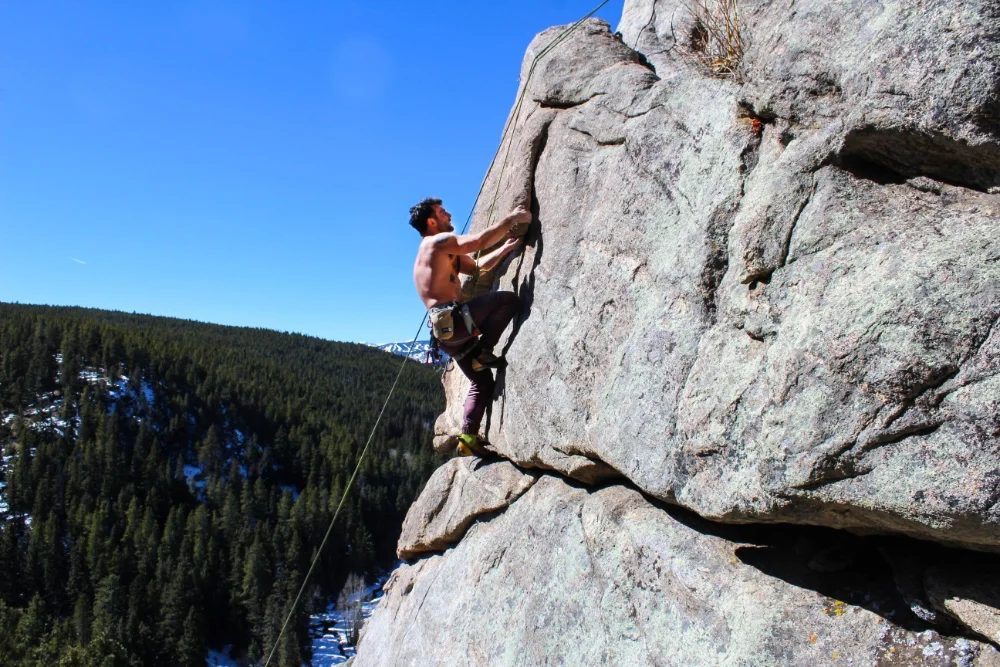
Pitch climbing is an essential skill for any rock climber. Beginning with the basics:
1. Climbing Skills: To be successful at pitch climbing, you’ll need to have basic skills such as proper foot placements, body positioning, balance, rope management, and communication with your partner. All these skills are essential for making progress on long routes without compromising safety.
2. Belay Device: A belay device is a critical piece of equipment when it comes to pitching climbing. It’s important to understand how to properly use your belay device in order to keep yourself and your partner safe while ascending or descending a route.
3. Equipment: Of course, you need to have the correct gear, but you also need to know what type of equipment works best for different types of climbs. Essential climbing gear includes harnesses, ropes, carabiners, and other pieces that help provide security while navigating pitches. A triple runner or mm cord is necessary when making anchor systems and connecting them to your carabiner gate.
With the right equipment and understanding of the techniques, pitch climbing can be both safe and enjoyable. By learning the basics here today, climbers can start building their experience in multi-pitch terrain confidently and responsibly!
Multi-Pitch Climbing
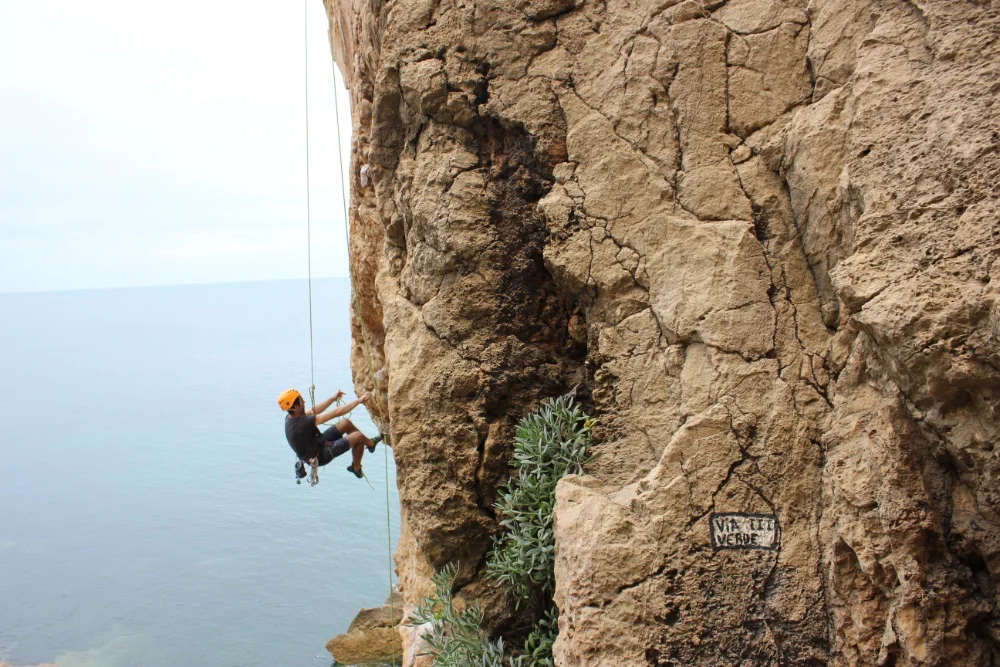
Multi-Pitch Climbing is the next step for rock climbers wishing to take their climbing experience to a new level.
It involves ascending a cliff with multiple pitches, each pitch being its own section of the climb and requiring different techniques and strategies.
Traditionally, multi-pitch climbs are done by two people who alternate leading on each pitch. This allows them to split gear depending on the climb’s length and difficulty.
The leader ascends first, placing protection along the way so that if there is a fall, it’s possible to stop before reaching the ground. Upon reaching the top, or an intermediate belay station along the way, the leader sets up a rope system and anchor to bring their partner safely up after them.
A multi-pitch climb requires more planning than a single-pitch route. Multi-pitches require extra equipment such as ropes, slings, carabiners, and more than one belay device; this not only adds weight but also requires proficiency in setting anchors properly and using specialized knots such as clove hitches or Italian hitches to attach yourself or your partner into anchor points.
Finally, having proper communication while climbing is key on multi-pitch climbs because you may have limited visual contact with your partner during some parts of the route due to obstacles blocking your line of sight.
For a more in-depth tutorial on the basics of pitch climbing, check out this video:
Big Wall Climbing: A Multi-Pitch Climb?
Big wall climbing is a type of multi-pitch climbing that requires additional skill and knowledge. It involves scaling large walls, usually over 500 feet tall, which may not be possible to climb in one pitch. Big wall climbers rely on specific gear and techniques that are more advanced than those used for single-pitch climbs.
| Gear | Technique |
|---|---|
| Climbing Anchor | Belaying |
| Ascenders/Descenders | Rappelling |
| Portaledge Camping | Crack Climbing |
Here are some basics you need to know to climb a big wall:
- You must have the right equipment;
- You need to know essential climbing techniques so you can navigate through any tricky sections with ease;
- You need to learn how to properly set up safe anchors at different points along your route so that you can safely rappel back down if necessary;
- Finally, for very long climbs knowing about portaledge camping provides a great way to rest during the ascent or descent.
Big wall climbing can become a reality for even novice climbers. However, before beginning any multi-pitch climb it’s essential to choose routes within your current ability level – too difficult of a route could lead to dangerous situations or injury due to lack of experience.
In order to make sure you stay safe while pushing yourself out of your comfort zone, carefully consider each route’s difficulty and your technical abilities before attempting any big wall climb.
Choosing The Right Pitch For Your Skill Level
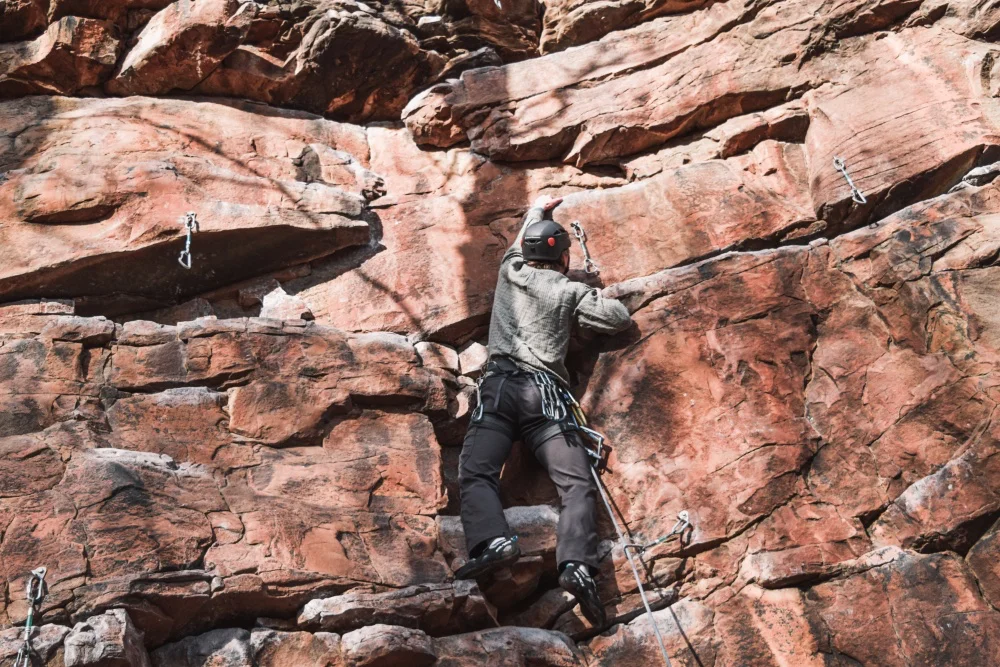
Picking the right pitch is key to a successful climb. Before you set off, make sure your climbing shoes are comfortable and that you have the necessary belay technique for the type of rock climbing you’ll be doing.
Depending on your skill level and experience, different pitches may present varying degrees of difficulty. Novice climbers need to select routes that require footwork rather than strength. Intermediate climbers can start to incorporate some more challenging features like overhangs or high-angled faces. Advanced climbers like steep lines with plenty of protection points throughout the ascent.
No matter what level of climber you are, it’s important to remember that safety always comes first. Choose pitches appropriate for your experience so that you don’t get in over your head. That way you can enjoy yourself without any unnecessary risks or stressors as you ascend the cliff face.
Select your route with care. Consult with other experienced climbers who know the area well and read up on reviews from people who have completed the same pitch before, if possible. Additionally, consider factors such as weather conditions and time constraints when making your final decision so you can complete the climb within these parameters.
[convertkit form=5027836]
Mental Preparation For Pitch Climbing
Now that you’ve chosen the right pitch for your skill level, it’s time to start mentally preparing yourself for a successful pitch. Whether you’re a single-pitch route climber or working on something longer, having the right mental attitude is essential.
First, ensure you have confidence in yourself and your abilities. Visualize success as much as possible before attempting the climb; envision completing each move with ease and grace.
This will help build up your confidence so when it comes down to actually doing the climb, you are prepared both physically and mentally. It also helps if you keep positive self-talk going throughout – “I can do this” etc. – because getting stuck into negative thoughts can prevent you from pushing through any challenges you face.
Another important aspect of mental preparation is determining what gear you need for each part of the climb.
Careful preparation and planning allow you to focus more on the climbing itself rather than worrying about whether or not you have everything needed to succeed. Planning out quickdraw placements ahead of time can be helpful too – especially if there’s an overhanging section where extra weight could cause fatigue sooner than expected – but don’t go overboard: leave some flexibility in case conditions to change mid-climb!
By following these tips and properly preparing yourself beforehand, you’ll be confident enough to tackle whatever challenge awaits you on your next pitch climb.
Here is a great video on how you can train your mental skills for climbing:
Frequently Asked Questions
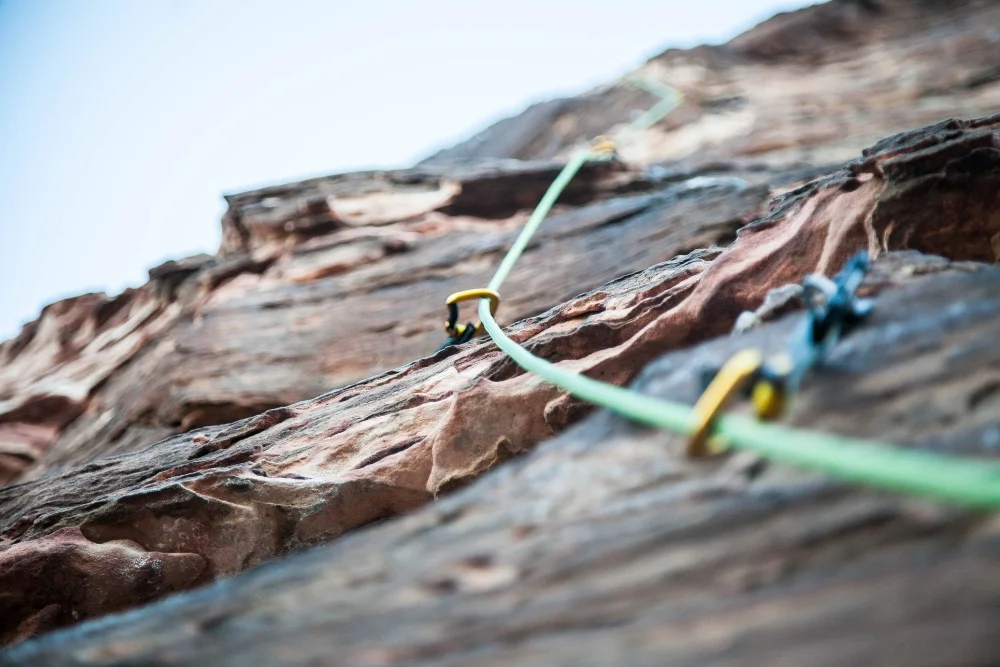
How Do I Know If I’m Ready For A Multi-Pitch Climb?
Beginning a multi-pitch climb can be a daunting prospect. But the truth is that with some preparation and research, anyone can make their way up a rock face in multiple pitches.
Think of it like this: each pitch is like its own mini climb. You ascend one at a time while connected to your belayer through rope and protection points along the way. It’s important to treat each pitch as a separate challenge. Once you have the necessary knowledge and skills you will know how to push past your comfort zone to complete your climb.
Here are some questions you should ask yourself to determine if you’re ready for a multi-pitch climb:
- What kind of experience do I have climbing outdoors?
- How comfortable am I placing protection on lead?
- Have I climbed enough routes to build confidence in my ability to read sequences correctly?
- Do I understand how to rappel safely or retreat from an exposed route when needed?
Answering these questions honestly will tell you whether or not you are ready to climb longer routes. When you can answer each question positively, you will be ready to take your climbing beyond just one pitch.
So, get out there and start exploring! With proper education and practice, tackling any type of rock face can become second nature – even those intimidatingly high ones!
Are There Any Special Techniques For Climbing Pitches?
When it comes to rock climbing, pitches are an intimidating but rewarding challenge. If you’re ready to push your limits and take on a multi-pitch climb, there are some key techniques that can help you master the pitch and reach new heights in your climbing career:
- Counterweighting: Counterweighting is when you shift your weight onto one side of the rope while maintaining balance with the other hand. This helps keep tension on both sides of the rope as you ascend or descend the route. This can be especially helpful if you find yourself stuck at any point during the climb.
- Focus on small goals along the way: Breaking up each part into smaller chunks will make it feel more manageable.
- Be alert and aware: Always know where your body is positioned relative to the wall and use proper footwork throughout your entire ascent—this will give you more control over your movements and increase stability as well.
- Don’t forget about rest points: Taking regular breaks every few moves will allow you to focus on each move individually rather than taking too long to try one move before moving on to another. Don’t rush. Move slowly through each section so you can maintain strength and energy levels until reaching the top of your goal pitch!
How Long Should I Expect A Pitch To Take?
Climbing pitches can be intimidating for beginners, but with the right know-how and practice you’ll soon be soaring up those rock walls! To help get you started on your journey to mastering this skill, let’s take a look at how long it typically takes to climb a pitch.
The time will vary depending on factors such as the type of route you’re taking and its difficulty level, as well as your physical fitness level and experience. However, here’s a rough guide:
- A beginner climber should expect their first few pitches to take anywhere between 20 minutes – 1 hour
- An intermediate climber may find themselves consistently climbing for 40 minutes or less
- Experienced climbers may even manage to finish a full pitch in just 15 minutes or less.
These rules of thumb should help you plan your pitches efficiently.
Are There Any Safety Precautions I Should Take Before Attempting A Pitch Climb?
Safety is always the number one priority when rock climbing, and when attempting a pitch climb it’s especially important to be mindful of your safety:
- Make sure you have the right clothing and all the necessary equipment: including a harness, helmet, rope, and carabiners
- Understand how each piece of equipment functions so that if something does go amiss during the ascent, you’re prepared to handle it responsibly.
- Know basic rock-climbing techniques such as knot tying and rappelling.
- Climb with a more experienced climber who can act as your spotter and belay partner while you ascend.
It’s also smart to research what type of terrain you’ll encounter on your chosen route ahead of time. Then make a plan for dealing with whatever obstacles may arise throughout the course of your climb. Being aware of potential hazards beforehand—such as loose rocks or slippery surfaces—can help ensure that there aren’t any unpleasant surprises along the way.
If you take these precautions and plan carefully, your pitch-climbing adventure will be enjoyable and successful.
What Is The Best Way To Get Experience In Pitch Climbing?
If you’re considering taking on the challenge of pitch climbing, one of the best ways to get started is with an experienced guide or instructor. Many experienced climbers offer classes designed specifically for beginners who want to learn how to safely navigate pitches.
Not only will they teach you proper technique and safety protocols, but they can also provide tips and advice about navigating different terrain types. Plus, having someone who has been there before as a resource can help give new climbers confidence when tackling difficult routes.
Another great way to gain experience is by joining group climbs with more advanced climbers. These groups are often very welcoming environments where everyone helps each other out while getting valuable hands-on instruction from more experienced individuals.
In addition, these groups usually have predetermined routes so that all members feel comfortable attempting them without feeling overwhelmed by unfamiliar territory or too much pressure from their peers.
Do plenty of research beforehand so you know what kind of conditions and challenges you will face, and never attempt something beyond your skill level without supervision from an expert climber. Doing this will ensure a safe and enjoyable time out on the rocks!
Start Pitch Climbing!
When it comes to pitch climbing, in particular, having a good understanding of what pitches are and how they work can make all the difference between success and failure.
With careful preparation and training, anyone interested in rock climbing can begin their journey knowing they have the information needed to approach pitches confidently and safely. Here are some of the keys to preparing for pitch climbing:
- Learn proper techniques such as rope management, knot tying, and rappelling so you can safely traverse from one point to another without any issues.
- Understand indoor and outdoor climbing protocols so that you know how each environment operates differently and what safety measures must be considered before attempting a route.
- Understand the importance of communication between climbers when dealing with multi-pitch routes to ensure everyone’s safety throughout the ascent/descent process.
Anyone interested in multi-pitch climbs should start by getting experience with single-pitches first. This will help you build confidence and allow for incremental progress toward more complex challenges as your skills improve.
So don’t let fear hold you back from exploring the world of pitch climbing – it’s an exciting adventure waiting for those who are brave enough to take the plunge! By arming yourself with information about techniques, learning safety measures, and doing practice sessions, you’ll be well prepared for any route or challenge that comes your way.

